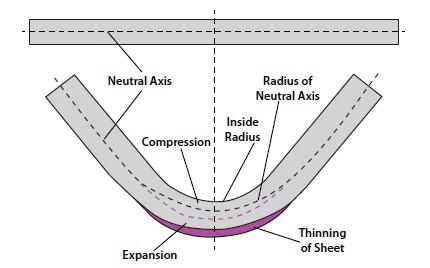Does Sheet Metal Undergo Rolling

Explain why they are important.
Does sheet metal undergo rolling. The sheet metal rolling process consists of passing metal stock through one or more pairs of rolls to reduce the thickness and to make the thickness uniform. 8 b describe the characteristics of sheet metals that are important in sheet forming operations. The grain direction created in the direction the sheet is rolled at the mill runs the length of the full sheet. Corrugated sheet metals prepared through a process called cold form process.
Sheet metal forming 38 points a how does sheet metal forming differ from rolling forging and extrusion. Rolling is classified according to the temperature of the metal rolled. In this method metal sheets pressed flat and taken throughout roll forming. You can see it on a new piece of sheet metal by noticing the direction of visible lines running through it.
The process is performed on a roll forming line in which the sheet metal stock is fed through a series of roll stations. This can cause an uneven roll with various amounts of pressure throughout the piece. Because metals must often be shaped through various means such as forging rolling extruding or drawing it is necessary to know whether the metal will break or otherwise become deformed under stress. In metalworking rolling is a metal forming process in which metal stock is passed through one or more pairs of rolls to reduce the thickness and to make the thickness uniform.
The concept is similar to the rolling of dough. Finally they are cut into the required length. Metals with a high ductility have at the molecular level delocalized electrons that can be shared among many atoms. Another interesting defect that can occur in flat rolling is alligatoring where the work being rolled actually splits in two during the process.
When the sheet is made its particles become elongated in the direction of rolling. It is employed to convert metal ingots to simple stock members like blooms billets slabs sheets plates strips etc. The process of shaping metals into semi finished or finished forms by passing between rollers is called rolling. Explain why and how they do so.
Roll forming sometimes spelled rollforming is a metal forming process in which sheet metal is progressively shaped through a series of bending operations. Sheet metal is a metal being formed by a manufacturing process into thin flat pieces. Another common defect in sheet metal rolling involves the splitting of a workpiece. 7 c list the properties of materials that influence spring back.
Sheet metal forming between rolls. If the temperature of the metal is below its recrystallization temperature the proce. In sheet metal industrial practice a sheet may be passed through a series of leveling rolls that flex the sheet in opposite directions to flatten it. During the rolling process a piece of metal will experience a different amount of reduction in certain areas of the piece.
If the temperature of the metal is above its recrystallization temperature then the process is known as hot rolling.














































